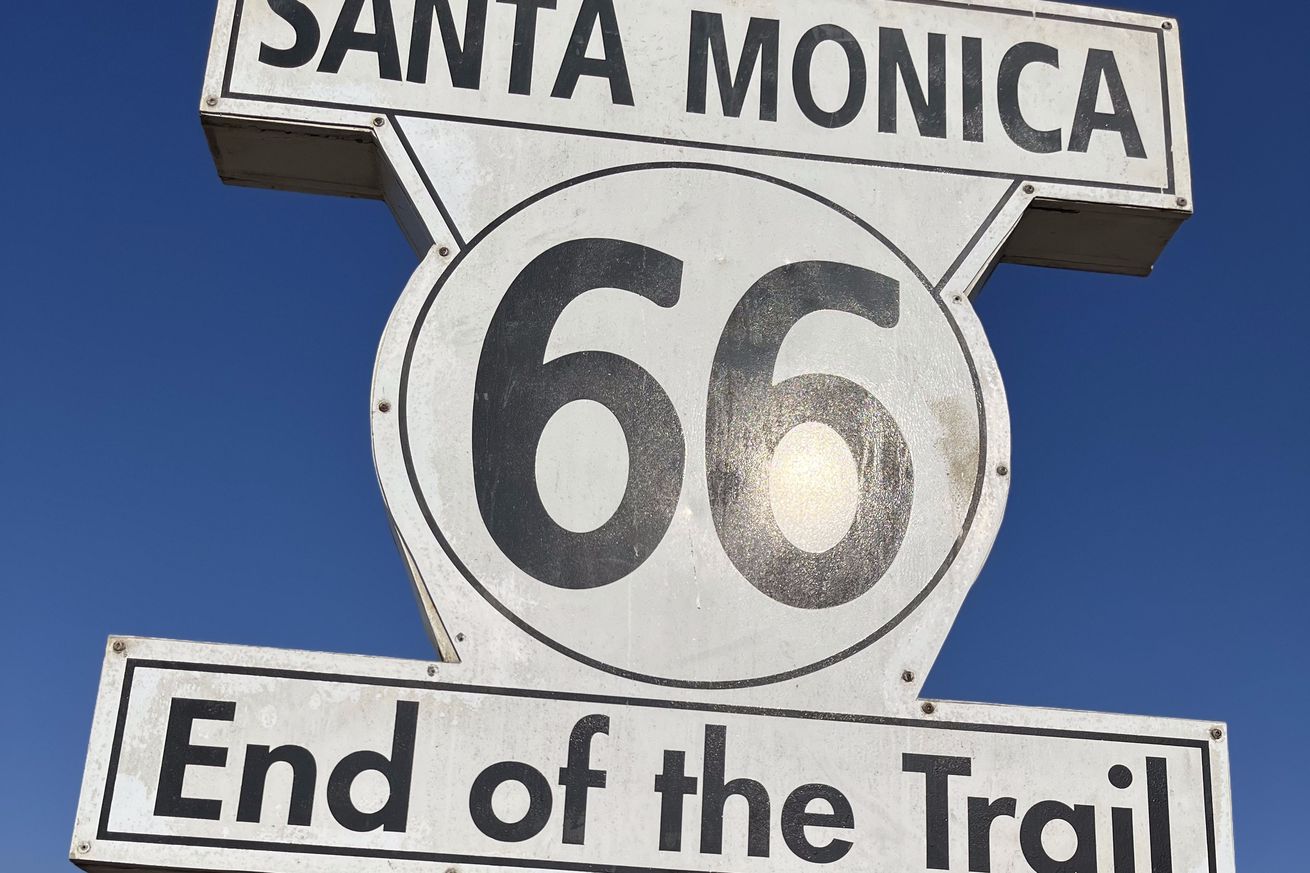
There was a fire there. A large fire. I spent 17 days there.
Introduction
Many of you know that I along with numerous other Firefighters deployed to Southern California to aid in the response to the Palisades Fire in Los Angeles. After taking an informal, unscientific poll among VEB readers, the consensus seemed to be it would be OK for me to tell my story, even though it has nothing to do with baseball or the St. Louis Cardinals.
The Palisades Fire broke out in the Pacific Palisades area of Los Angeles, CA on January 7th. January is an unusual month for catastrophic wildfire. However, most major wildfires are terrain and wind driven, and Santa Ana winds are NOT particularly unusual in the Southland at that time of year, and the terrain in that area of town lends itself to wildfire, particularly if it has been a dry winter, which this one has been.
I haven’t seen solid estimates of how many structures were lost. Around 5,000-6,000 is what I last heard. By comparison, the 2018 Camp Fire (Paradise) consumed around 18,000 homes. I was there, too. Palisades was terrible, but not the worst.
In this business, we never know when the call to deploy to a disaster will come. There was several days warning on approaching weather and climate conditions in LA (apparently unbeknownst to the Mayor of LA, who went to Ghana instead), along with years of prior experience, so I was not unprepared. Able to just grab bags and go on a moment’s notice. It can be hard on family, disappearing like “poof” and then gone for weeks.
About a thing called WUI
There is a term called “Wildland-Urban Interface” or “WUI” (woo E). The casual definition of WUI is a place where homes/neighborhoods/communities have been built in areas that lend themselves to wildfire. Often, the build-out is so complete, it can be hard to recognize what would exactly be prone to wildfire anymore. Pacific Palisades is such an area. Totally urbanized, with banks, shopping malls, boutiques, wide paved roads and so forth. And yet today, much of it lies destroyed.
If your backyard looks like the picture below, you live in the WUI and things can go sideways very quickly.
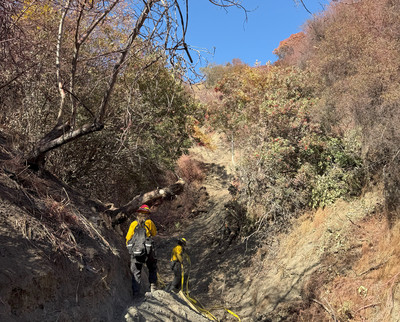
As much as wildfire is in the news each year, particularly in the western US, it can be surprising to find out how little that risk is felt by the people who live in the most fire-prone areas. As a WUI firefighter, I can walk through an area such as Mandeville Canyon and see a fire trap you couldn’t pay me to live in. Yet the residents can seem quite accepting of the risk (how could they be unaware?) and some appear to have done little to mitigate that risk. Then, when wildfire hisses at their door, they are often shocked and unprepared, and their acceptance of the risk becomes quite different.
Do you live in the WUI? The idea probably isn’t as remote as some might think. One of the largest and deadliest wildfires in US history occurred in Wisconsin, simultaneous with the Great Chicago Fire. Peshtigo Fire. More that 1,500 people were killed and over 1,000,000 acres burned. Wisconsin??? Yup.
Much of what we do is called “structure protection” and involves doing the mitigation work most homeowners could have done long before. Covering crawl space vents. Removing dead/down vegetation. Trimming shrubs away from the house. Moving stacks of firewood away from the house. Cleaning debris off the roof top and gutters. Just on Mandeville Canyon Rd (our assigned road), I’d bet we removed over 100 truckloads of chipped up vegetation. Just on the upper portion.
Houses aren’t the only things that burn
Commercial buildings, banks, chicken coops, radio towers, cell towers, electric poles.
Fire and water
Much has been made in the mainstream media about fire fighters running out of water. It is true that the Palisades area experienced a pressure loss and hydrants “went dry”. I believe it was the first night of the fire when the 3rd of three local water reservoirs went dry. Their system, as I understand, held about 3 million gallons in reserve water storage. Typically, 90% of all water storage is for firefighting potential, so they likely had ~2.7 million gallons in reserve. I caution people to avoid judging Los Angeles Department of Water and Power as incompetent or anything because water ran out. If you have a fire that consumes ~3 million gallons of water and the fire is not put out, that is a contingency I doubt any city in the country could handle without water system failure. On top of that, much of the water used was the result of buildings with sprinkler systems burning down from the roof down and the sprinkler systems would continue to pump out water long after the buildings came down. When we arrived, there was water coming out of everywhere, just running down the street and a key task was shutting off what we could, without entering dangerously unstable buildings.
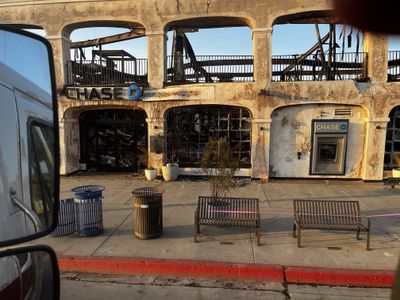
A vacation
My wife thinks it was a vacation since we spent the time hobnobbing with the rich and famous and it was 75 degrees and sunny and we got sleep on Malibu Beach. I’m kidding. My wife is a Firefighter, too, and knows full well what we faced. You couldn’t drag her there with 1,000 horses.
The owner/CEO of SnapChat essentially adopted the 300 Oregon FF who arrived (in 100 engines) and so we got a separate camp on our 24-hour off shifts. The catered food we got was materially different than what other crews in the regular camp got, for sure. When he found out how much the local laundromat was charging to clean our clothes, he flat out bought the laundromat. So we were a bit spoiled on our off-time. The 24-hour on-duty shifts? Not so much.
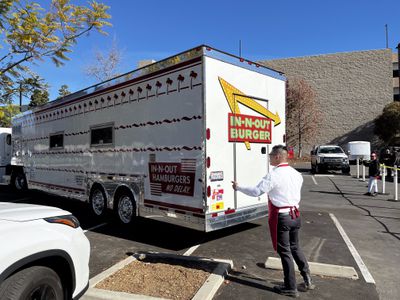
The impact of wildfire
For many people (most? all?), their home is their center. It is where they keep their treasures and memories. This seems true of both rich and poor. When that home is lost to wildfire, more has been lost than some wood posts, stucco walls and maybe a car or two. Take a moment and try and envision this scenario. You are at work. You can’t go home. You don’t even know if you have a home anymore. It will be days or weeks before you know. What would you do? Where would you go? Every day after work, you go …. Home. Not anymore.
Or this. You are home, doing chores, thinking of running to the store. Suddenly, a commotion arises and a very anxious police officer is telling you about great danger and to evacuate immediately. Suddenly, that very remote notion of wildland fire is very real and immediate. Flames are frightening when not in the fireplace. Grab one or two important things and get out. What would you grab from your home? Then you drive away, with fire and smoke seemingly closing in on you from all sides. The roads are jammed and traffic is not moving and the fire relentlessly approaches. This is the stuff that generates PTSD.
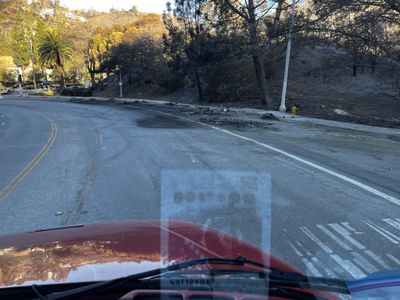
There is fear and anxiety in life-changing quantities at the outset, followed by disbelief and not knowing what has happened, and then hanging by a thread day after day, with nothing but the clothes you wore to work or as you escaped. Nothing.
This can be a dangerous job
I’m sure all of you have seen video footage of fire fighters spraying water into the teeth of a fire. Things get particularly exciting with 70 mph winds are blowing embers around and fire is all around you. Many have asked, “How can you be so calm in those circumstances?”. When you train and work around and in it enough, you learn to control your reactions and the safety of you and your crew is always paramount, so we aren’t crazy and not particularly risk-taking. We will only risk a lot to save a lot, and a wood structure already fully involved is not worth taking risks. Some say we rush in where angels fear to tread. We don’t rush. That’s how people get hurt.
Sometimes, other dangers lurk. Building collapse, traffic hazards, smoke inhalation.
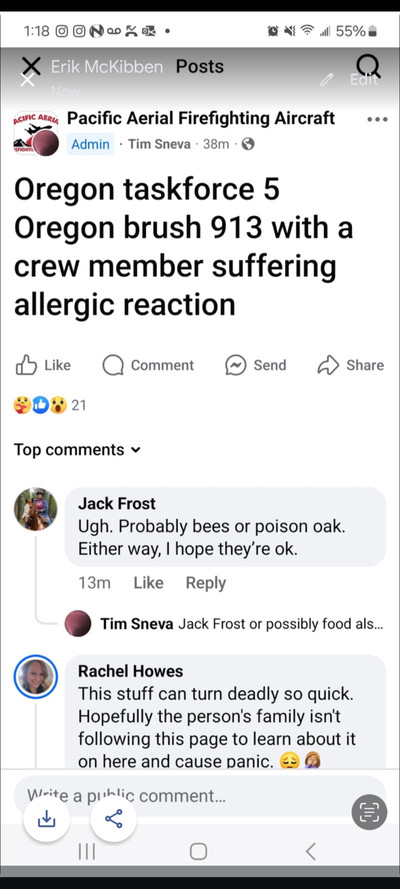
This was the unit under my command. This appeared in social media about 4 minutes after I called for help over the radio. The FF in my crew is ok. He got a trip to the hospital and now carries an Epi-pen wherever he goes and will for the rest of his life. I ordered my other crew member to say nothing to anyone back home about this until everyone (fiance, mother) could be notified and not be surprised or panicked. FB beat us to it. My wife called me a few minutes later. WTF?!? she asks. For many reasons, not a great day, but everything turned out OK.
The After-effects
Someone asked me what happens to people who didn’t have homeowner’s insurance. FEMA will often offer low-interest rate loans to help you rebuild (or maybe not anymore). Some charitable foundations will often help those on the lower end of the income spectrum. What fascinated me was the repeating stories of people who lived there who were house poor. All of their wealth tied up in the value of their property. In reality, most of the value remains, since the property itself (the location, the view) is the vast majority of the value. But putting together funds to rebuild the house they inherited, or bought in 1960, or lost homeowner’s insurance just a few weeks before? I don’t know. Many will have to sell the property. Many will struggle to afford a different place to live, both financially and emotionally. For many, it will take a long time to recover.
I know some of this from personal experience. Our community was impacted greatly by the Holiday Farms Fire of 2020. Here, we lost almost 1,000 structures in a fire that grew by 100,000 acres in one, wind driven day. That was a bad day! Here five years later, the rebuild is underway, but nowhere near finished.
One thing I will say. The community around us in LA was welcoming and gracious while we drove fire engines around at all times of night and took up too much space in parking lots. People, out of their own good will, would stop and try to give us supplies (food, water, etc.) to make sure we were taken care of. It was a side of humanity you don’t hear much about, but it was there and heartening to experience.
A few more visuals
Satellite views have become part of our everyday method of information gathering. Google Maps has already updated these views for the Pacific Palisades area. At a high level you can see the breadth of the destruction. Search for LAFD Station 69 and view the surrounding area, for an example. Or Pacific Palisades Bowl Mobile Estates. Incredible.
For those that like details, I can focus you in on a few. First night in, during active fire, we were stationed on Las Lomas Ave and nearby streets. Look at 1251 Las Lomas. We did some good there. Sadly, we couldn’t help the neighbors. 1109 Maroney burned down a short while before we got there. The owner at 1058 Maroney had not evacuated and was happy to see us. We extinguished a hidden fire in his yard before it became an issue. Visually travel up Mandeville Canyon Road. You will see on the hillside behind and even the rooftops of the houses look like a pink highlighter has been drawn in. Those are retardant drops as the fire encroached on the nearby homes. As you can see, very close. We spent the rest of our time in LA up and down that drive.
By zooming out, people can get a perspective on the scope of damage and the number of engines and firefighters needed to stabilize such an incident. By zooming in, I think it is easier to appreciate the human toll on a more personal level. There was a family that lived there. Not anymore. What is the phrase? “Ask not for whom the bell tolls…”.
The collection and dissemination of “news”
I will end with a story I found amusing.
One of my crew members is a 19-year-old kid who is a bit less naïve today than a month ago. The second or third night in, he got a front row seat as to how “news” is assembled and disseminated. We were on our 2nd shift in Mandeville Canyon and ABC News (with Peter Muir?) came in to do a story. Now, for us fire fighters, the fire was out. We were patrolling and keeping watch but hadn’t felt the need to spray a drop of water in ~24 hours. We had a lot of cleanup to do, but the Palisades Fire was out. That is what was really happening.
That said, we got to watch the news crew set up a mount for the reporter (in full fire gear) into the back of a pick-up truck and race up and down Mandeville Canyon Rd about 9 times (one for each take), presenting a breathless tale of an incredibly dangerous situation (their words, not mine). The only danger anyone was in was the reporter riding on a stool in the back of a moving pickup truck. I digress. Then we turned on the ABC show (GMA?) on the iPad in our engine and watched how they took these shots, edited them and inter-leaved these breathless takes of fire breathing down their necks with weather reports of impending doom due to dangerous winds (that would not have moved a leaf at the time). Our 19-year-old Firefighter was amazed when he could see with his own eyes what was really happening, versus how the news reporters collected info and how it got presented on national TV. It was like 3 different realities, and we got to watch all three simultaneously. He learned in the shadow of Hollywood what Trump means when he decries “fake news”. More fiction and entertainment than real news. But the real news wouldn’t have been very entertaining. I suppose showing a FF using a leaf blower isn’t … dramatic enough.
Sometimes I wonder about the seeming self-sustaining cycle this creates. Consumers’ desire to be titillated by entertaining news, and news media’s effort to create more excitement and entertainment so more will watch. Are facts really that boring?
Thank you for indulging my non-Cardinal story telling side. The mental health professionals say it is important we talk about our experiences after a critical incident. I must be doing that! When I next publish, it will be from Jupiter, Fla. I will head that way in a few days.